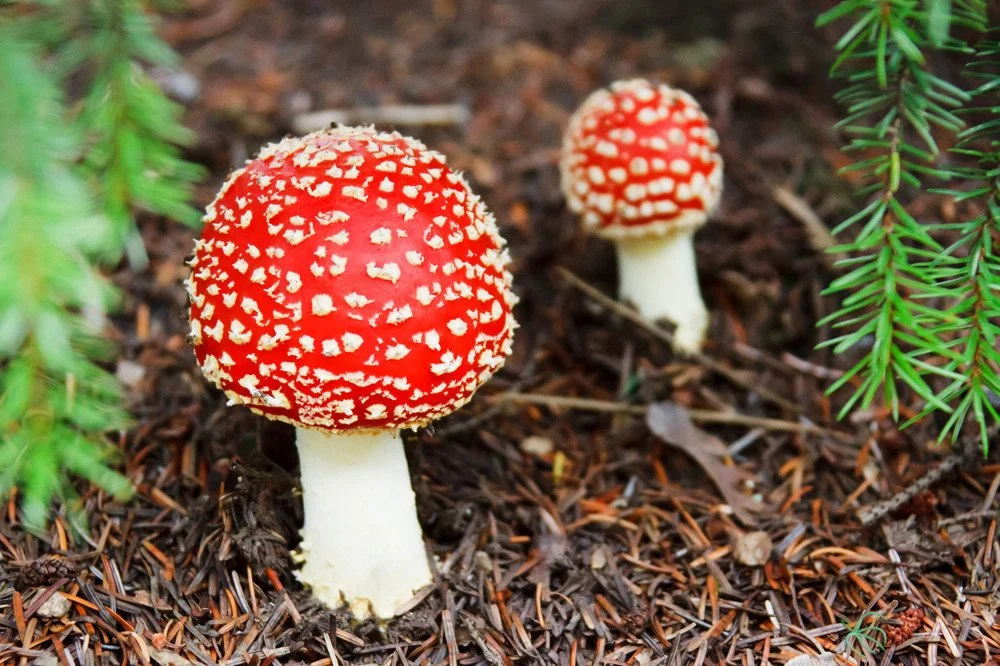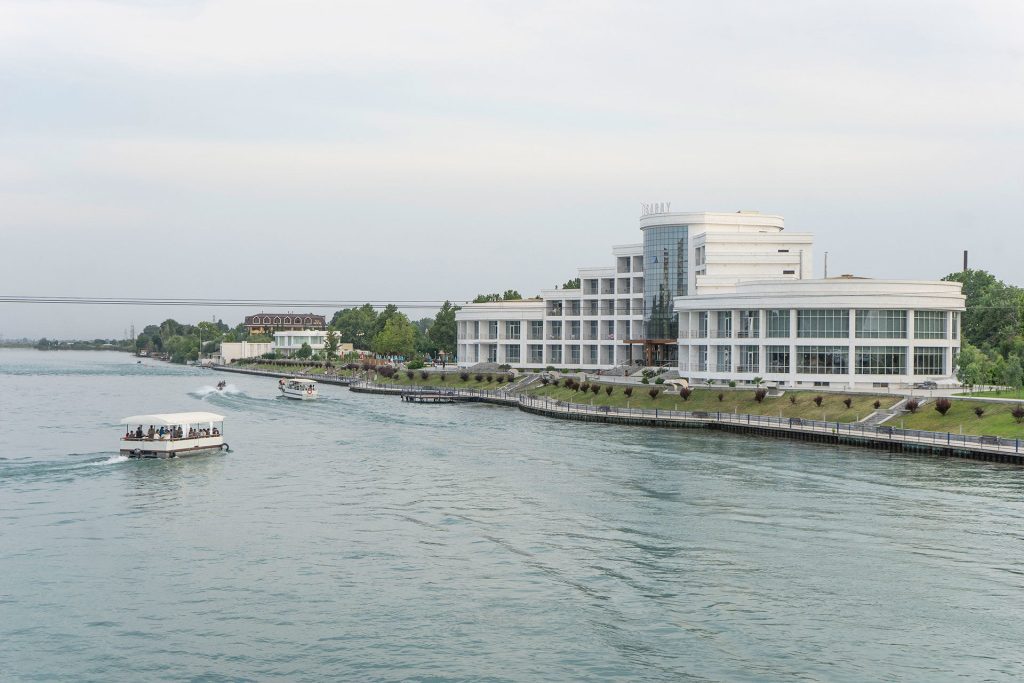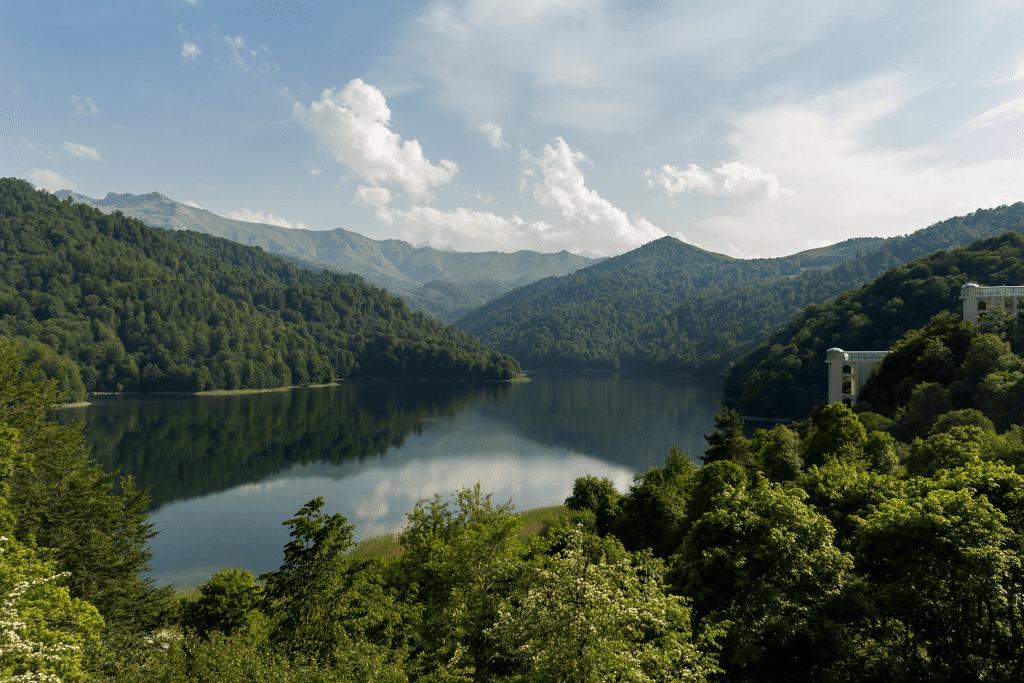
The territory of the Republic of Azerbaijan has a rich flora. More than 4,500 flowering, high-grade plant species are spread here. According to the total number of species, the flora of Azerbaijan is much richer than other republics of the South Caucasus. The plant species found in the republic make up 66% of the total number of plant species growing in the Caucasus.
The rich and colorful flora of the Republic of Azerbaijan is related to the diversity of its physical-geographical and natural-historical conditions, as well as the complex history formed under the influence of distant floristic areas.
The Republic of Azerbaijan is also rich in relic breeds belonging to the third period, representatives of which are more common in all zones, especially in the Talysh zone. Among them, ironwood, Lankaran acacia, chestnut-leaved oak, Caucasian hornbeam, bigavar, pumice stone, etc. can be shown. There are 240 endemic plant species in the republic.
The composition of the flora of Azerbaijan includes examples of all areal types, i.e. ancient forest, boreal, steppe, xerophilous, desert, Caucasian and adventive plant types. Examples of ancient forest types are most common in Talysh, boreal type in the mountain zones of the Greater and Lesser Caucasus, and to a lesser extent in the lower zones, while xerophyllous, Caucasian, steppe and desert types are widespread in the plains, foothills and steppe summers of the republic, and the most in the Kura-Araz plain. The adventive areal type is a little less common in the Kura-Araz lowland, the Caspian coast, etc. rich and colorful vegetation has developed in the lakes, ponds, streams and swamps of the plains.
Reed jungles with a cosmopolitan composition are often found along the banks of rivers and drainage canals, in swampy areas, and locally in plain regions. In such swamps, tall foxtail, sedge, suluf, soft broom, calish, etc. there are many. Here, the savanna-type high-tall murzhuk also creates an army.
In the Kura-Araz plain, there is a relatively wide spread of sedum, licorice and liqvar jungle. In the Karabakh Plain, plant species such as camel’s foot, horsetail, porug, aglarot, and iris both create obstacles and are found in the composition of other jungles.
In the port and rivers (especially in Agzibirchala port) most of the reeds, sea bream, sea bream, etc. there are jungles of plants. In swamps and warm places, gorse, salvinia, safflower, sufynida, cornflower create a special jungle and they find a large abode in the Kura-Araz plain. Gargi jungle is also typical for plain regions.
In the swamps of the Talysh plains, water lily, sagogot, iris, toadstool, yellow marsh iris, and marshes create special formations. For dried marshes, sedum, mint, sedum, quince,etc. such plants are typical.
Wetland plants are also found in lower, middle, upper and high mountain belts. Especially in the subalpine zones, wetland plants are spread over wide areas. There are more than 100 swamps, lakes and ponds in these zones.
The vast Kura-Araz plain, the Caspian coast and other plains are dominated by desert and semi-desert vegetation. Black salt marshes are widespread in deserts. Garashora’s branches spread on the ground, forming mounds, are mostly spread around Lokbatan, Mugan, and Eastern Shirvan. Saribash deserts with small hills are mostly found around the Caspian Sea, in the Kura-Araz plain.
In the dry and hot regions of the republic (Nakhchivan MR, Jabrayil, Zangilan), in the steppe plateau of the Greater Caucasus, xerophytic vegetation is found, i.e. phrygana, siblak, thorny gorse, beech, sometimes and weak juniper, juniper-pistachio. Frinals create independent formations (jungles) at heights of 1000-1500 m in Nakhchivan MR. More than 300 plant species are found in these formations. Kekotu and its species form tumil-kekotu formations in arid regions. For Tumil fields, dirt, desert, caravan, etc. is very typical. In this type of fields, there are also plants such as milkweed, gorse, and thistle. In the Republic, you can find sables in local form, i.e. blackthorn, murdrachala, rabbitalma, almond, tobulgala, wild pear, bird pear; ash also creates special formations and directly participates in the formation of good mountain-xerophyte vegetation. Gum trees, juniper trees, mountain forests, and mountain forests are among the unique formations of the republic, and each of them forms a special vegetation cover by itself.
The endemic and relict Eldar pine, a remnant of the Tertiary period, has preserved its naturalness in the steppe plateau of the Eldar plain in the North-West of the Republic. The presence of juniper, pistachio, blackthorn and 30-35 other higher plants in Eldar pine forest makes it possible to attribute this place to mountain-xerophyte vegetation.

Toadstool
Along the Kura, Araz, Ganikh and Gabirri rivers, there is a tugay forest in a ribbon-like local form. The basis of these forests is formed by trees and shrubs such as poplar, willow, elm, mulberry, yulgun, and pomegranate.

Kura River, Mingachevir
Sometimes special mixed forests have been restored along mountain rivers or in river valleys. Here you can find teatika, yida, willow, sumac, sorghum, yulin, mulberry, immortal bush, pomegranate, rose hip, blackberry, etc. the most. is spread. Chaitika is most common in the valleys of the Shin, Kish, Demiraparag, Turyan, Goychay, Agsu, Valvala and Tartar rivers. Alder and alder trees often form large woodlands along the banks of the Talish river. Another type of alder (Alnus barbata) is typical for the swamp forests of Talish. In the Talysh forests, the local endemic species of figs, yarrow, hedge ivy, gandalash, various types of cypress, sedum, tussock, iris jungle, yellow marsh iris, toadstool, and marshes create special formations in swamps.
In the Guba-Khachmaz, Karabakh zones, as well as in the Alazan-Eyrichay depression, lowland forests of local form are spread. The basis of these forests is long-stemmed oak, elm, hawthorn, alder, etc. contane. In addition to the above-mentioned species, in the forests of Alazan-Eyrichay valley, there are many types of trees such as birch, linden, cypress, elm, pear, and among ivy plants, white vine, stone ivy, and wild grape. There are dozens of different forms of long-stemmed oak in lowland forests.
Ironwood and chestnut oak are among the typical tree species of Talish’s lowland forests. In addition to these relict tree species, there are hirkan-type woodlands consisting of Caucasian vela, 2 types of free trees, elm, cherry poplar, and gilazhar. In the lower floors of these forests, there are also evergreen shrubs such as saffron and cypress. The Caucasus mountain range creates special forests on slightly humid slopes. Caspian devil tree dominates Talish. On the seaward slope of these forests, Lankaran acacia, linden and many others create special mixed forests. A little above sea level, another species of birch forms tall dense forests together with Oriental beech. In the lower floors of this type of forest, they create a special floor for blackthorn, sedge, and a small amount of calves.

Yellow rhododendron
In the mountainous zones of the Greater and Lesser Caucasus, broad-leaved forests are spread at heights of 600-1800 m above sea level. Among the genera that make up these forests are Georgian oak, Eastern beech, and Eastern oak in the upper mountain belts. Beech trees create highly productive, multi-composite mixed forests in this zone. In addition to beech and oak, linden, hemlock, 5-6 types of birch, especially Eastern oak, and trautfetter birch also grow in those forests. In a very dense beech forest there is no grass cover, but in a somewhat sparse beech forest, grass cover develops along with shrubs. Yellow rhododendron, blackberry, garmashov, gandalash, many species of sedum and tens of different cereal grasses can be found under the forest. On the slopes of the mountains, Georgian oak, currant and gooseberry are common. In high mountain zones (1800-2000 m) there are park-type forests. Park-type forests together with subalpine meadows and tall grasses form subalpine sparse forests.

Gooseberry
On the slopes of the high mountains, the eastern oak is typical, and on the northern slopes, the trees are bent as a result of avalanches, and for the high mountain slopes of the Greater Caucasus, trautfetter birch and individual Caucasian gooseberry are typical. Coniferous forests are locally found in the Eldar plain (Eldar pine), in the mountainous regions of the Greater and Lesser Caucasus (Koch pine), especially in the Bulannyk river basin of the Balakan region, in small forests around Goygol (at an altitude of 1600 m), and in the area of large rocks around Goygol with Koch pine. creates a mixed forest. Among conifers, many species of blackberry and juniper are widespread in mountain-forest zones. Caucasian rhododendron forests are located in small areas in the northwestern zone of the Greater Caucasus, especially in the subalpine zone of the Zagatala-Balakane regions.

Small forest around Goygol, Azerbaijan
At an altitude of 1800-3200 m above sea level, subalpine and alpine meadows of different composition, steppe and grass plants are dominant. The real subalpine meadow spreads in dozens of variants depending on the relief and character of the high mountains and creates various formations. In the subalpine zone, the high grassland also forms a special formation; the composition is quite diverse. Most of the upland and subalpine vegetation consists of plants that have emerged from the forest floor. Hundurotlug is rich in various representatives of the family of sedges, sedges, sedges, sedges, sedges, soft brooms, sedges, nettles, khashambul, and sedges. In the subalpine zone, there are meadows of various composition, low moisture and mesophilic meadows, dry xerophytes, and grassy meadows. The basis of the subalpine meadow is white birch, ala tongalotu, Caucasian thin sedge, many types of purple barley, alpine sedge, lame and three-leaf clover, geranium, dewdrop, gorse, andis make up; for this place, bulgary, bulagotu, gantaper, dilganadan, fodder, marigold, Novruz flower, scabiosa, plantain, cruciferous and dozens of other plants are characteristic. Up to 1000 plant species are spread in the subalpine meadow.

Subalpine Meadow, Azerbaijan
Although alpine meadows are widely distributed on the tops of high mountains, on steep slopes, in saddle mountain passes, their diversity is less than that of subalpine meadows, but the types of small plants are very colorful and of great importance. Alpine carpets consist of two groups of formations: real alpine carpets (caraway, plantain, dewdrops, dandelions) on small arable soils and alpine carpets (sibbaldia, bellflowers, macrotomys) on stony areas.

Karabakh Region, Azerbaijan

